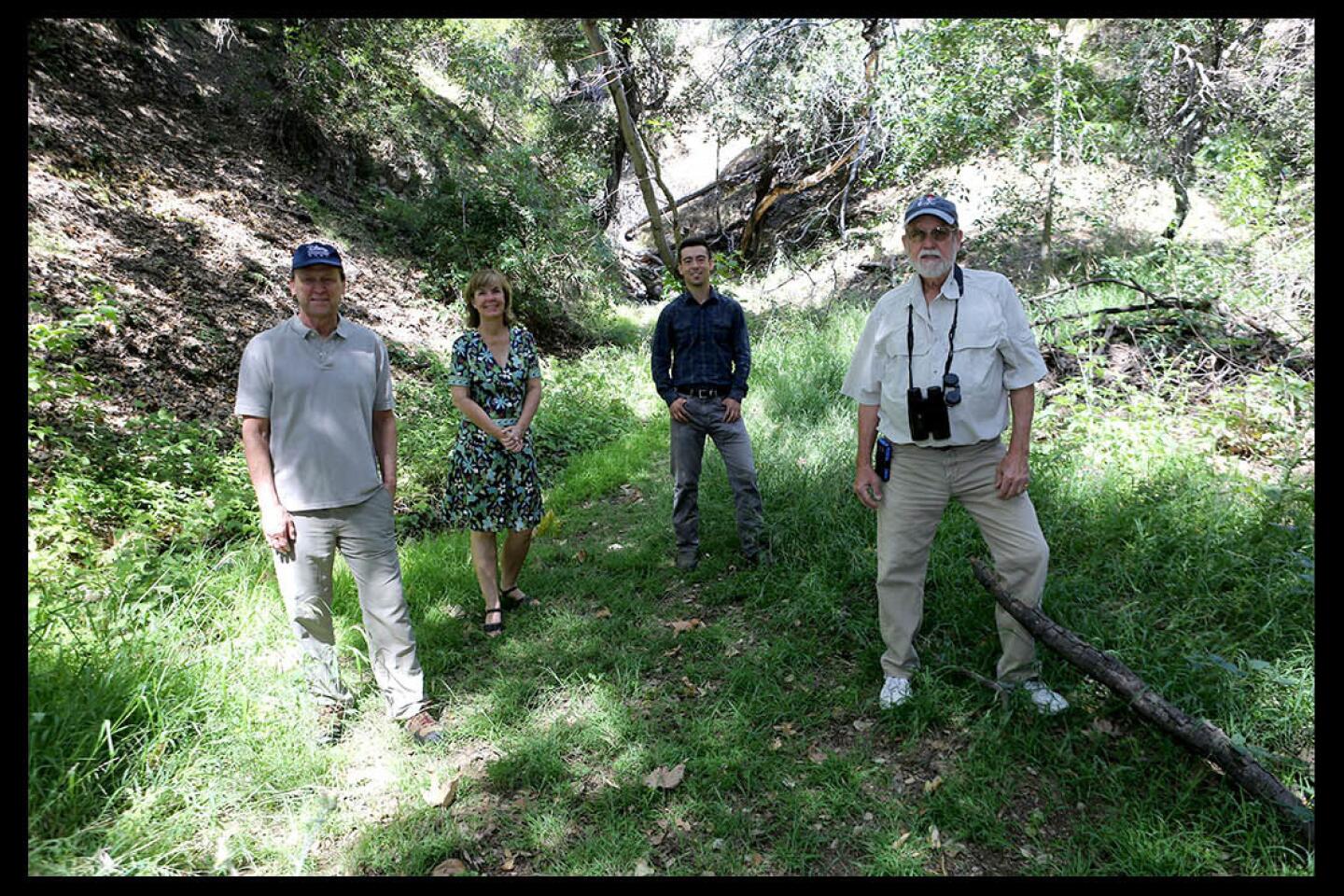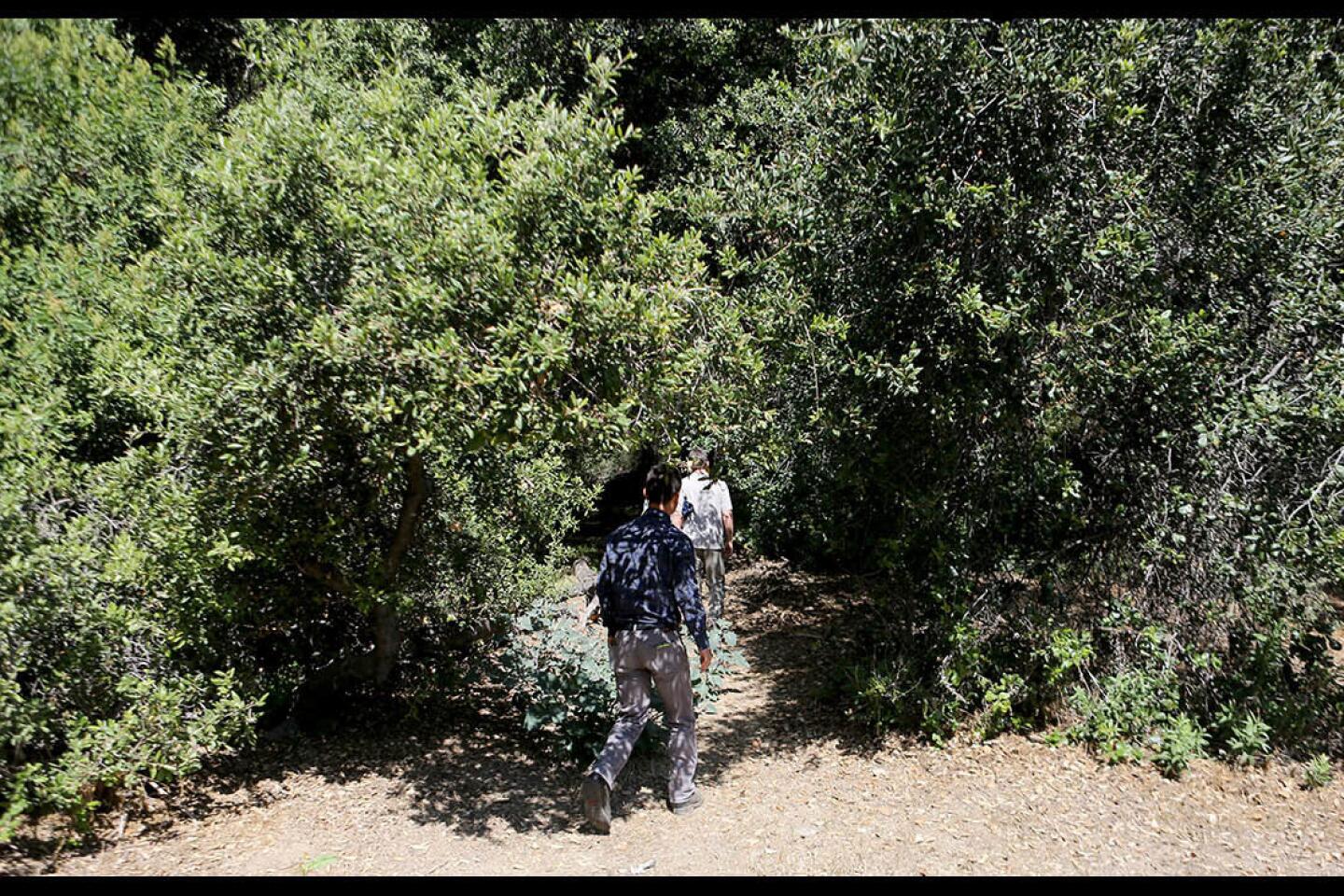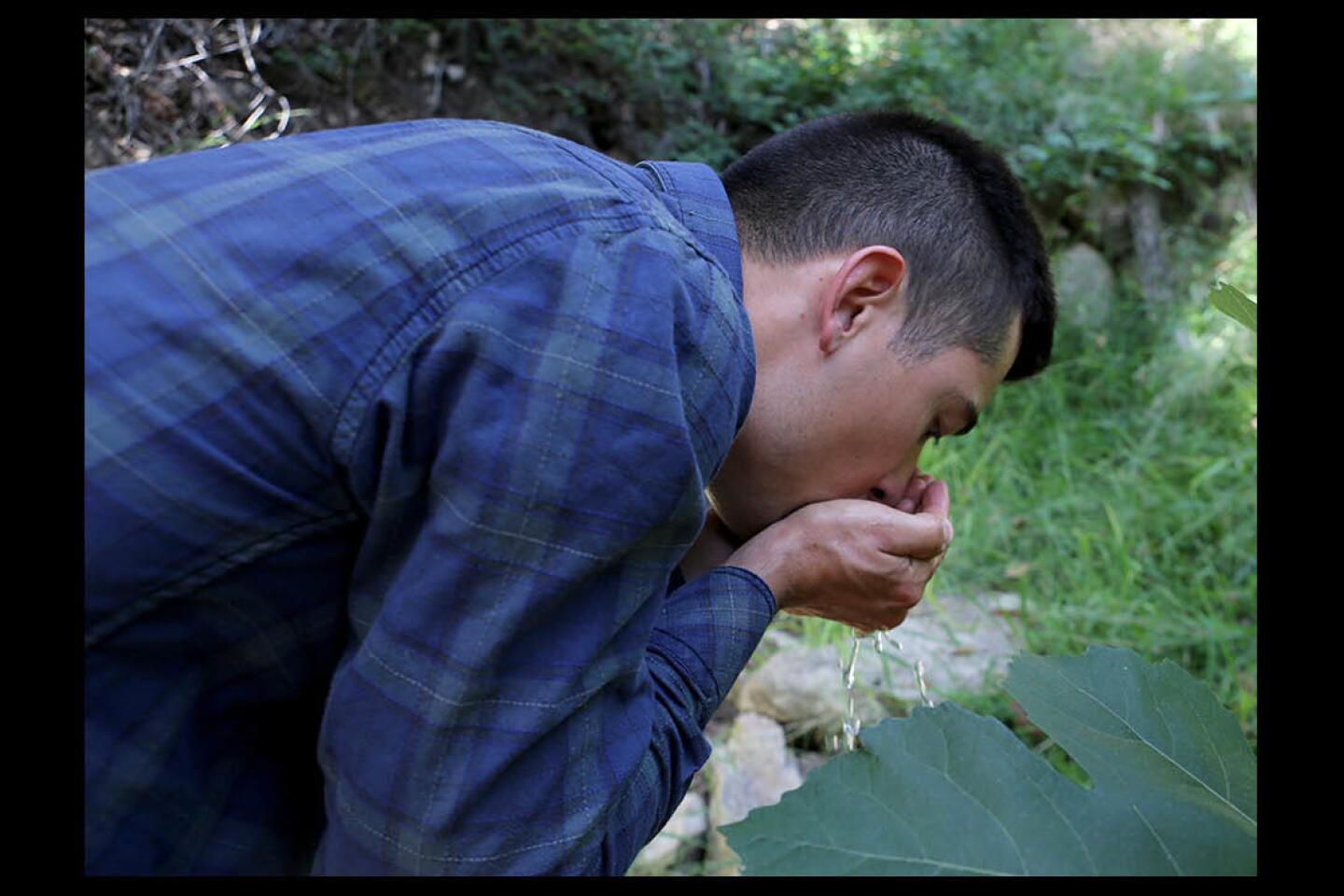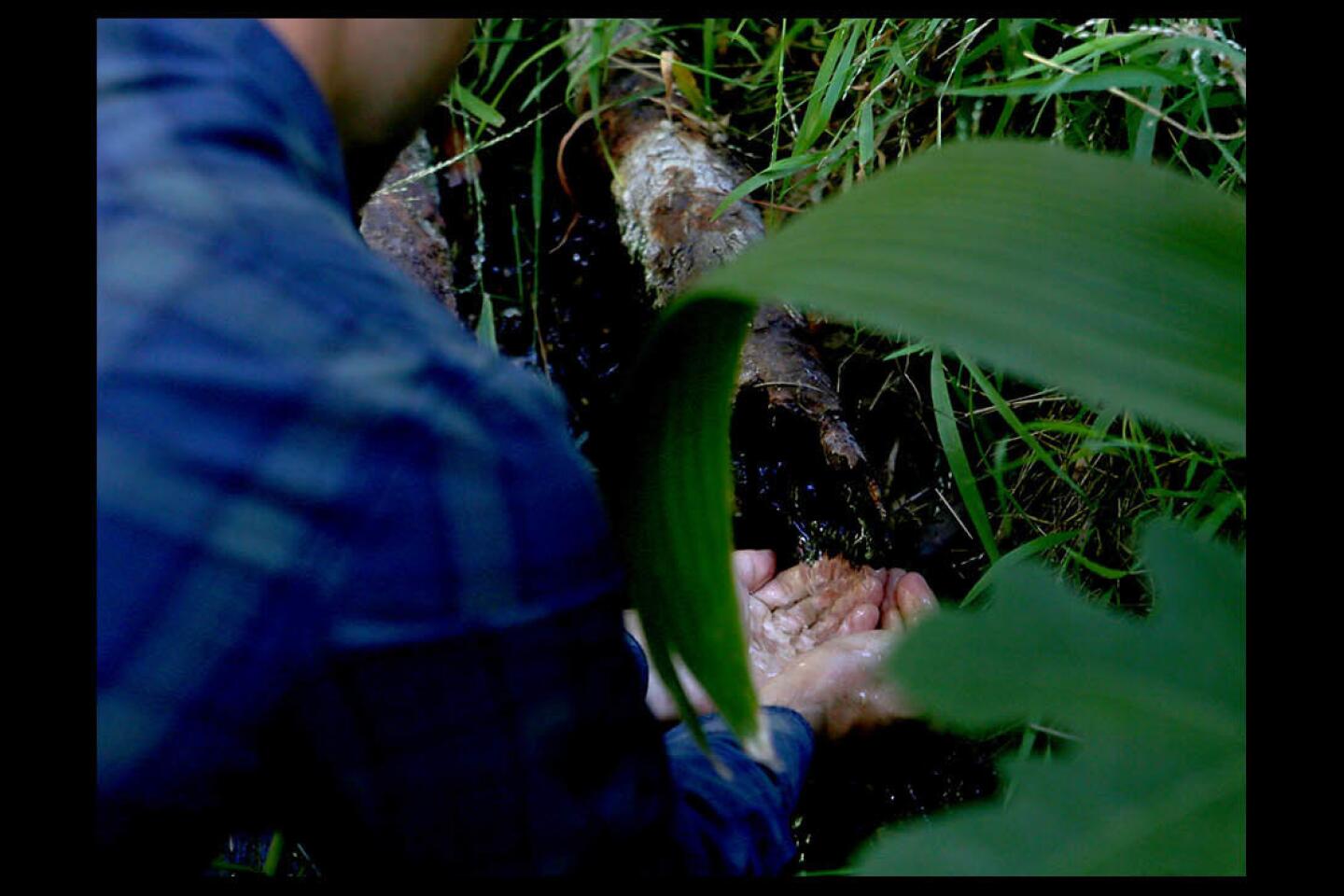Cottonwood Canyon’s acquisition by local conservancy marks big win for wildlife
- Share via
In 2013, when they first stepped foot on the wooded 11-acre parcel of land off Pasadena’s Linda Vista Avenue, conservationists knew they were entering a kind of promised land.
Cottonwood Canyon, nestled on the northeastern edge of the San Rafael Hills adjacent to La Cañada’s Flintridge neighborhood, contained a rare year-round spring — the presence of water and shady oak canopies made it an ideal thermal refuge for heat-weary wildlife.
Members of the Arroyos & Foothills Conservancy, an Altadena-based nonprofit that’s worked since 2000 to preserve land for wildlife and establish safe corridors for them to travel, suspected the canyon might hold greater promise as an access point between the San Gabriel Mountains and Glendale’s Verdugo Mountains. The latter range has long been considered a wildlife island completely circumscribed by urban development.
The Cottonwood property teemed with biodiversity and, moreover, it was for sale.
“It appeared to be the only real viable route in and out of the San Rafael Hills, in any direction, to and from the Arrroyo Seco,” said John Howell, AFC’s executive director and general counsel. “If it had been sold to developers, it would only have taken two houses on Inverness [Drive] to close it off.”
On June 6, after a five-year campaign to secure the nearly $1.3 million needed to acquire the land from two cooperative landholding families and develop a conservancy of local caretakers to protect it into the future, AFC announced its acquisition of Cottonwood Canyon.
Funds from the California Department of Fish and Wildlife and Santa Monica Mountains Conservancy — made available by the 2014 passage of the Proposition 1 water bond — contributed $815,000 while another $450,000 was offered through Caltrans’ Environmental Enhancement and Mitigation program.
“No single funder will fund everything. It has to be a combination of different funding sources,” Howell said.
Members conducted surveys that revealed a potential 20-mile wildlife corridor stretching from Hahamongna Watershed Park to Tujunga and western portions of the Angeles National Forest comprising some 2,200 private parcels of land.
Preserving the Hahamongna-Tujunga Corridor is a pivotal first step to connecting other wildlife islands like nearby Griffith Park, where mountain lion P-22 roams in 8 square miles of space (5% of the space required by healthy adult males), to wide swaths of protected land.
AFC Director of Operations Barbara Goto says public awareness is key. That’s where the “Friends of Cottonwood Canyon” comes in. A determined group helped raise $425,000 to establish a conservancy that will guide land use and programming efforts.
“When we go into a community we figure out the best way to raise awareness and educate community members about the incredible resources they have,” Goto said, calling the discovery of Cottonwood an eye-opening experience for residents.
“People really did not realize this incredible habitat existed among this intensively developed area,” she added.
Motion-sensor cameras have captured families of bobcats, deer and other large mammals in photographs that convey the vitality of Cottonwood Canyon, according to Goto. And the discoveries keep rolling in.
On June 8, 2016, a female bear taking dips in La Cañada homeowners’ swimming pools near Jarvis Avenue attracted great media attention. Two days later, the same bear was spotted on Glendale’s Saint Gregory Road before moving to Whiting Woods near the base of the Verdugo Mountains.
Sporting a red ear tag, the bruin was named Red Bear No. 2.
Conservationists curious about her route of travel turned to Cottonwood’s cameras and learned the bear had burrowed in the stream there before heading over the hillside toward Glendale.
“It was kind of a high point for us in validating the wildlife corridor,” Goto recalled.
With the land transfer finalized, AFC members are using a land prioritization matrix they developed to identify other gateway properties and free up “choke points” along the Hahamongna-Tujunga Corridor.
“What we’re trying to create is free and appealing passage for wildlife,” Howell said. “This is just the beginning. [But] the story’s getting out there, and we want allies.”
For more about the Arroyos & Foothills Conservancy, visit arroyosfoothills.org or call (626) 796-0782.
Twitter: @SaraCardine









